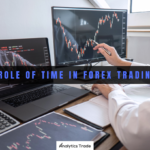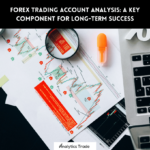What is Elliott Wave Theory?
Elliott Wave Theory is a technical analysis tool developed by Ralph Nelson Elliott in the 1930s. It is based on the idea that markets move in predictable patterns, which can be identified and used to make better trading decisions. The theory is based on the observation that markets move in waves, with each wave having a distinct shape and size. The theory states that these waves can be used to identify the direction of the market and the potential for future price movements.
How to Use Elliott Wave Theory in Currency Analysis
Elliott Wave Theory can be used to analyze currency markets and make better trading decisions. The theory can be used to identify trends, identify potential entry and exit points, and identify potential reversals. Here are some tips on how to use Elliott Wave Theory in currency analysis.
1. Identify the Wave Pattern
The first step in using Elliott Wave Theory is to identify the wave pattern. This involves looking for patterns in the price action of the currency pair. The most common wave patterns are the impulse wave, the corrective wave, and the diagonal wave. Each of these patterns has a distinct shape and size, and can be used to identify the direction of the market.
2. Identify the Wave Count
Once the wave pattern has been identified, the next step is to identify the wave count. This involves counting the number of waves in the pattern and determining the direction of the trend. The wave count can be used to identify potential entry and exit points, as well as potential reversals.
3. Analyze the Wave Structure
Once the wave count has been identified, the next step is to analyze the wave structure. This involves looking at the size and shape of each wave and determining the direction of the trend. The wave structure can be used to identify potential entry and exit points, as well as potential reversals.
4. Identify Support and Resistance Levels
Once the wave structure has been identified, the next step is to identify support and resistance levels. This involves looking for areas where the price has been rejected or where the price has found support. These levels can be used to identify potential entry and exit points, as well as potential reversals.
5. Monitor the Market
The final step in using Elliott Wave Theory is to monitor the market. This involves keeping an eye on the price action of the currency pair and looking for potential entry and exit points. It is important to monitor the market on a regular basis, as the wave patterns can change quickly.
Conclusion
Elliott Wave Theory is a powerful tool that can be used to analyze currency markets and make better trading decisions. By identifying the wave pattern, wave count, wave structure, and support and resistance levels, traders can identify potential entry and exit points, as well as potential reversals. It is important to monitor the market on a regular basis, as the wave patterns can change quickly. To learn more about Elliott Wave Theory, check out this video. By using Elliott Wave Theory, traders can gain a better understanding of the market and make more informed trading decisions. With the right knowledge and tools, traders can use Elliott Wave Theory to analyze currency markets and make better trading decisions.






Comments